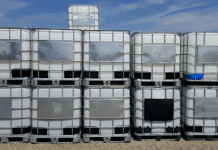
Mechanically pruning and/or hand pruning pistachio tree canopies can facilitate orchard operations and harvester efficiency and produce good-quality annual crops.
Louise Ferguson, an Extension Specialist with the UC Davis Department of Plant Sciences, further explained the reasoning for pruning mature trees.
“You have to have a smaller tree with a canopy that is easily penetrable in order to spray,” Ferguson said. “And then especially for harvesting efficiency. You don’t want to spend 11 months preparing a crop for it to not land in the harvester’s catch frame during harvest.”
A productive, harvestable tree is upright with all major branches and scaffolds above a 45-degree angle, Ferguson said, and the tree should have its own space in the orchard where branches don’t overlap with adjacent trees. Additionally, the tree should not be more than 16 to 18 feet tall at the time of harvest.
These characteristics of an ‘ideal’ canopy are a result of a combination of mechanical and hand pruning tree canopies.
“If you’re going to do a combination of mechanical and hand pruning, you first use [mechanical] topping to control height,” Ferguson said. “Topping does have quite a response. Particularly on some rootstocks if the tree has gone into alternate bearing, the best way to do it might be to top every other row every other year which spreads the cost out and yield loss over two years.”
After topping, a double-sided mechanical hedger should also be used every other row every other year, Ferguson said, followed up by two types of hand cuts: removing the lower canopy flat branches that may interfere with the harvester catch frame; and the non-productive “snake” that winds up through the center of the canopy and branches at the top shading canopy interior below.
Cost-wise, hand pruning on its own with a designated crew can be $500 to $600 per acre, according to Ferguson. Mechanical pruning can cost $28 to $35 per acre for topping and hedging.
“Let’s say you’re paying $70 per acre for topping and hedging,” she said. “If you really maintain your orchard floors, and you can go four to five miles per hour with the topper/hedger without suddenly hitting a bump and dipping into your trees another two feet deeper, you could cut that cost by as much as 40% if the harvest can go faster. Follow up with hand cuts for low flat and crossing branches, and snakes would be about $150 per acre.”
A 2:1 cost ratio of hand pruning (including stacking and shredding) to mechanical pruning + hand pruning is a conservative estimate, Ferguson said, and is dependent on the crew on-hand.
Acknowledging the pruning needs of a specific orchard and achieving a good-quality annual crop will ultimately depend on how efficiently the harvester is harvesting. Ferguson suggests following the harvester once in a while, find out what it is breaking or not breaking − and not harvesting − and determine if a second harvest is worth it.
“Follow up and prune out what is broken, what connects with the [harvester’s] catch frame, and what does not harvest” she said. “If it doesn’t harvest now, it sure isn’t going to harvest later.”
















